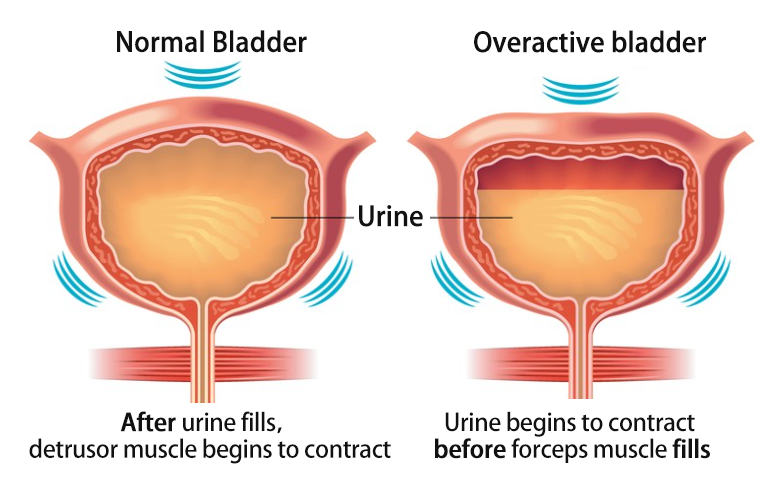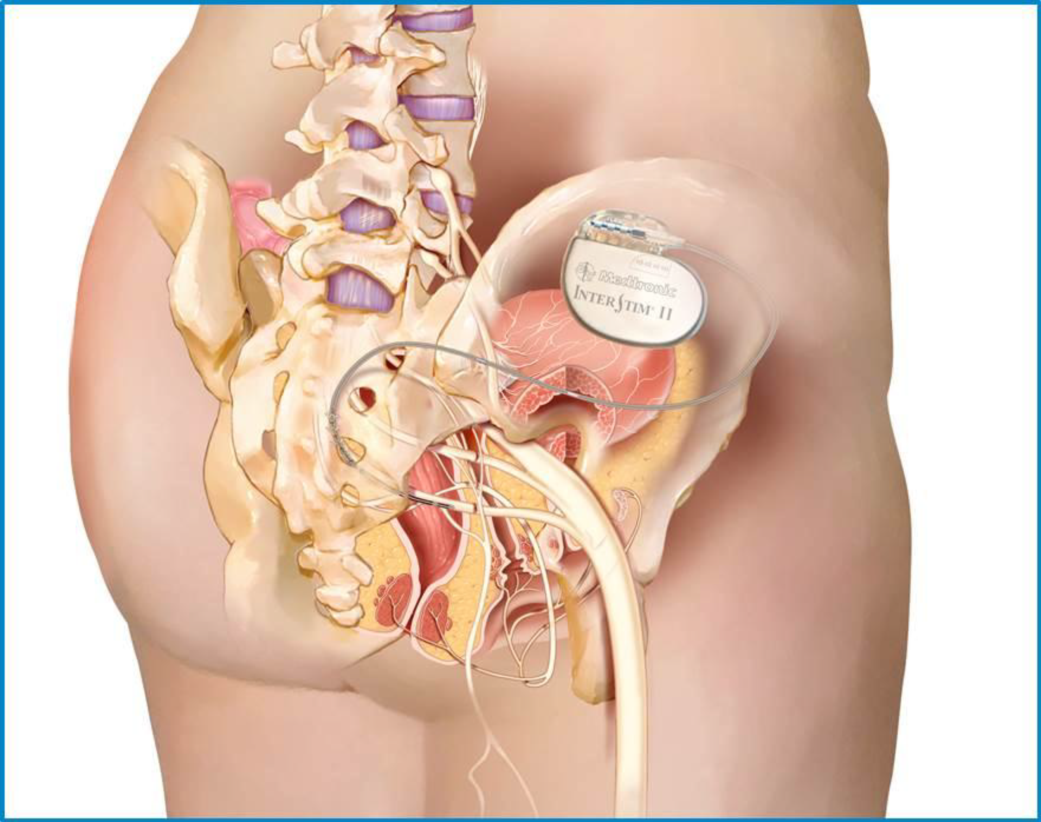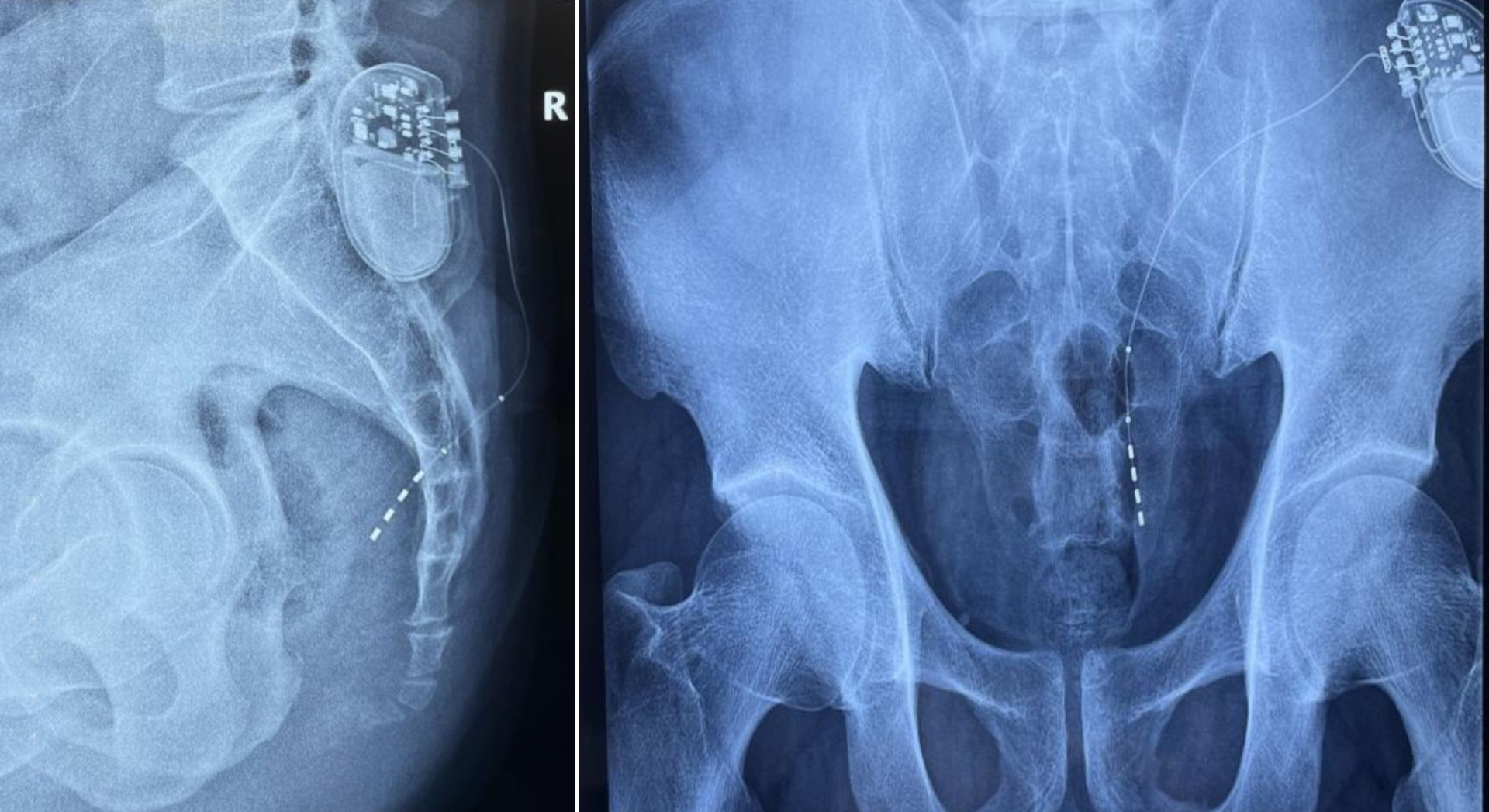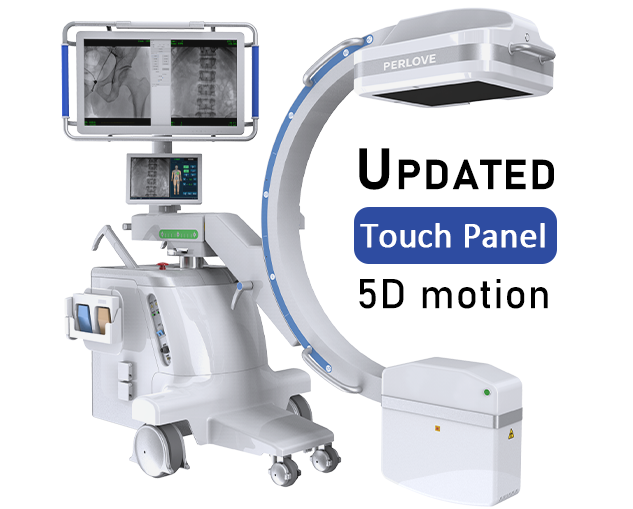News
2023-03-16 10:46:25 Views:1785
【Clinical Case】-Application of Large Image Output C-arm in Sacral Nerve Modulation Surgery
Improvement of urinary frequency and urgency with electric current
Have you ever experienced the embarrassment of having to go to the bathroom every few minutes? For someone who suffers from frequent urination, urinary urgency and difficulty in urinary control, this embarrassment seriously affects the quality of life and personal dignity.
Recently, a 59-year-old uncle experienced a sacral nerve modulation surgery combined with the Perlove Medical Large Plate All-in-One C-arm with the help of the team of Director Zhong Qing of the Second Affiliated Hospital of Nanjing Medical University, and successfully improved his symptoms of urinary frequency and urgency for many years.
The patient was diagnosed with overactive bladder (OAB) 2 years ago and experienced severe symptoms of urinary frequency, urgency and fine lines, and her doctor performed a sacral nerve modulation surgery. Recently the symptoms started to get worse again and the quality of his life was suffering. The medical team decided to reposition the electrode stimulation and changed the stimulation point from the original left sacral 4 nerve foramen to the sacral 3 nerve foramen, and the symptoms improved smoothly with the new neuromodulation.

Overactive bladder disorder
Overactive bladder disorder (OAB) refers to a range of urinary abnormalities caused by involuntary contractions of the detrusor (DO) muscle of the bladder when urination occurs. The International Continence Control Society (ICS) defines OAB as:
Urinary urgency, usually accompanied by increased daytime frequency and/or nocturia, in the absence of urinary tract infection or other detectable disease, with or without urinary incontinence (wet urine) (dry urine)1.
The detrusor muscle is a layer of smooth muscle on the inner wall of the bladder that allows the bladder to store urine when it is diastolic and to expel urine when it is contracted. The contractile movements of the detrusor muscle are innervated by the sacral 2 - sacral 4 nerves.
There are many factors that may trigger OAB, such as neuropathy, aging, diabetes, urinary tract infections, and tumors and stones.
Treatment for OAB can be behavioral modification, such as reducing caffeine intake and increasing pelvic floor muscle training, or pharmacological treatment, such as taking antimuscarinic agents including mirabellum, depending on the cause and degree of the disease. For severe OAB it can also be treated with neuromodulation techniques such as transcutaneous tibial nerve stimulation (PTNS) or sacral nerve modulation (SNM)2.

Sacral Nerve Modulation (SNM)
In sacral nerve modulation or sacral nerve stimulation (SNS), the physician first inserts electrodes through a guide needle into the sacral 3 nerve foramen under fluoroscopic guidance to stimulate the nerve fibers and inhibit the contraction of the detrusor muscle through pulsed current. In this step, the physician will first test and evaluate the patient's response to the nerve stimulation, and if the stimulation effect is significant, the protocol will meet the surgical expectations. Next, a pulsed current generator is implanted in the nearby subcutaneous fat and connected to the electrodes so that the area can receive long-term electrical stimulation in the future to improve OAB symptoms.
The SNM technique is a minimally invasive treatment with a short procedure time and the patient only needs to receive local anesthesia. The technique has now been shown to be effective in over 40 studies. The vast majority of studies have shown success rates of over 50% for curing OAB using SNM3.

Intraoperative images of the patient
Advantages of Perlove large flat panel Integrated C-arm PLX119C in SNM

When using the traditional 9-inch flat detector or image intensifier C-arm, the imaging area is small, and when observing the guidewire positioning, it is not possible to present a large fluoroscopic image due to the limitation of the surgical bed, which requires multiple shots and reduces the efficiency of the surgery. The PLX119C is equipped with a 30cm x 30cm large flat detector, and its large imaging area makes up for the difficulties caused by inconvenient positioning.
Compared with the C-arm of the impact intensifier, the flat detector imaging brings less distortion and can accurately reflect the relationship between electrode and sacral foramen position, which improves the expectation of surgical results.
References
1.Haylen BT, de Ridder D, Freeman RM, Swift SE, Berghmans B, Lee J, Monga A, Petri E, Rizk D, Sand PK, Schaer GK An International Urogynecological Association (IUGA) / International Continence Society (ICS) joint report on the terminology for female pelvic floor dysfunction. Neurourol Urodyn, 2010,29:4-20; International Urogynecology J, 2010,21:5-26
2.White N, Iglesia CB. Overactive Bladder. Obstet Gynecol Clin North Am. 2016 Mar;43(1):59-68.
3.Monga AK, Tracey MR, Subbaroyan. A systematic review of clinical studies of electrical stimulation for treatment of lower urinary tract dysfunction. Int Urogynecol J 2012;23:993–1005
-
Perlove Medical | CMEF 2025
Read More » -
Application of Interventional C-arm in Esophageal Stricture Stent Placement
Read More » -
The Third-Generation High-End 3D C-Arm Installed in a Tertiary Hospital
Read More » -
Perlove Medical is Exhibiting at CMEF 2025 in Shanghai!
Read More » -
By the Numbers | Perlove Medical Wins Multiple Awards for Brand, Product, and After-Sales Service!
Read More » -
High-End 3D C-Arm | Introduced to PLA 79th Group Army Hospital
Read More »





